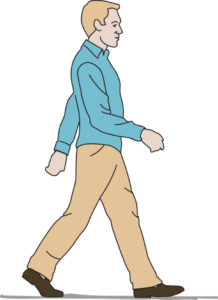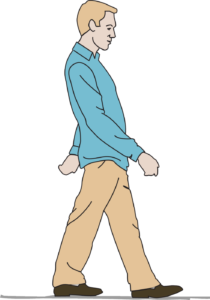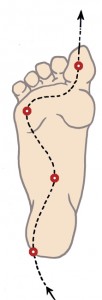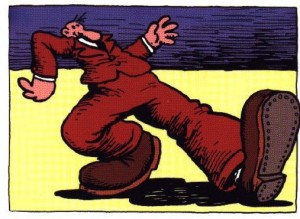 You would be hard pressed to find someone to tell you that walking isn’t good exercise.
You would be hard pressed to find someone to tell you that walking isn’t good exercise.
There aren’t many givens in our world but this is one of them—walking is good for you.
What is interesting about these general pronouncements is they never, and I mean never, talk about how you should walk.
The psoas major is my favorite muscle, the body’s most important muscle and the main engine of walking.
And my pronouncement today is walking is only good for you if you use the psoas correctly.
Three muscles connect the legs to the spine (psoas, piriformis and gluteus maximus) but only the psoas connects from the front of the body and to the lumbar spine.
In fact the psoas created the curve in the lumbar spine when we came up to stand and its connection to this section of the body is what makes it so important.
If the skeleton is well aligned which means the leg bones, or femurs, are directly under the pelvis, the psoas can initiate each step from the deep core. What this looks like when walking is a foot that falls under the knee and relatively close to the pelvis, equidistant from the opposite leg.
The question then is what initiates the step if not the psoas?
What usually happens is the legs move forward too far and too fast which leaves the quadriceps (thigh) and adductor (inner thighs) muscles to begin the journey of ambulation.
When walking is going well every step is a spinal twist that not only moves the body but stimulates, lubricates and tones it.
The body that moves well is a self-healing machine and that healing only happens with a functional psoas.
When we are walking well with the good use of the psoas, the pelvis tilts and rotates in such a way as to create the above mentioned spinal twist.


When we fail to use the psoas and walk correctly the pelvis tends to get stuck and hike up from side to side rather than tilt and rotate.
This very common pattern eliminates so many of the possible benefits derived from walking correctly with the psoas.
 Steps that are initiated with the quadriceps and adductors tend to move through the outside of the foot which minimizes the ability of the psoas to help with walking. Every step we take wants to end through the inner foot on the mound of the big toe.
Steps that are initiated with the quadriceps and adductors tend to move through the outside of the foot which minimizes the ability of the psoas to help with walking. Every step we take wants to end through the inner foot on the mound of the big toe.
The big toe corresponds to the inner upper thigh and the psoas.
When a step is completed successfully the psoas of the back leg is activated through this inner foot/inner thigh connection.
This successful movement through the back leg stabilizes that side of the body and spine as the opposite leg and psoas is released to come forward.
There is very little in our musculature that is not involved with good walking technique.
The psoas major, iliacus, all four pairs of abdominal muscles, erector spinea, IT Band, and so on, up and down the chain of good movement.
Sometimes these posts get away from me.
There will be another one coming soon that details all of the muscles of walking that are engaged with each step (which is what this one set out to be).
***

